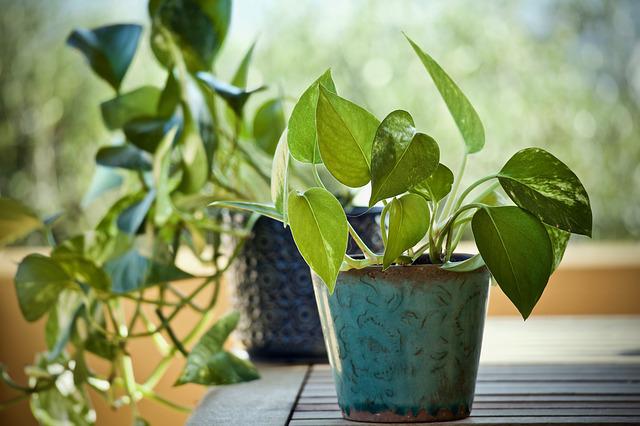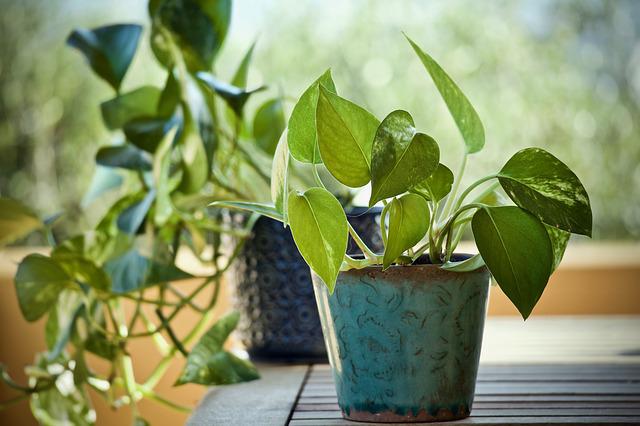You might have noticed that your pothos are hardy babies and need little or no attention to thrive. Yet, all pothos sunburn easily and may look very unhealthy with prolonged exposure to sunlight.
As a plant parent, you might have noticed that your pothos is hardy and needs little attention to thrive. However, pothos plants are not immune to the effects of the sun, and prolonged exposure can lead to unsightly sunburns.
The pothos plant is popular in the house plant world as Devil’s Ivy, and they do not just die. They are beautiful companion plants that give plant parents joy without stressing them out. These plants are favorites for beginner plant parents due to their low-maintenance and flexible lighting needs.
So, it is upsetting to find sunburns on your pothos plant. This article helps to demystify the effects of pothos sunburn and shares gardening tips that keep your plants safe from sunburns.
Gardening Conditions for Pothos
The pothos is a climbing plant that makes a beautiful ornamental house plant. Its beautiful tendrils crawl on the wall and lighten the home’s mood as it joyfully blossoms. The pothos is fast growing and can climb up to 20-40 feet as it grows.
There are several species of the pothos plant. The most popular garden choices are the Jade Pothos, Marble Queen pothos and Satin Pothos. These all have exceptional qualities that set them apart from their siblings. Yet, they have uniting properties such as longevity, hardiness and ease of grooming.
The optimal growth environment for the pothos plant includes:
- A slightly acidic soil pH of 6.1 – 6.5
- Well-draining humus soil mix
- Bright, indirect light, preferably in areas with shades
- Humidity levels of about 80-90%
- Temperatures between 18C – 29C
- Balanced fertilizer application at juvenile period; once every four to six weeks
Pothos Sunburn – Effects of Exposure to Direct Sunlight

We now know that pothos is a happy plant that adapts to all grooming conditions and will thrive with little care. Yet, they are partial to indirect light, and you may experience pothos sunburn due to the following reasons:
1. Injured Tissues
Pothos are well-behaved plants that do not make their plant parents mad. They adapt to your routine and make do with all that life throws at them. However, their only pet peeve is exposure to direct sunlight for long hours.
This is because the plant tissues suffer damage from the intense sunlight and get hurt. This presents as browning and wilting of the tissues; in extreme situations, the plant stems may also wilt.
2. Parched Soil
The soil houses all the essential nutrients which the pothos need to thrive. And although pothos need light irrigation to thrive, parched soil is deadly. This is because the pothos roots need to take nutrients from the soil and use soil water as a vehicle.
Soil water dissolves essential elements and enables the roots to take them up for the pothos’ nutrition. So, when you expose the pothos to the scorching sun, the soil dries up. Consequently, the entire plant suffers dehydration and starts to wilt. This will improve the plant’s susceptibility to sunburn.
3. Dehydration
On sunny days, we all get thirsty and light-headed, and we can have sunburns when we stay out for long. This also happens with our pothos babies on hot days. The pothos uses up their water stores as they try to cool off. This may result in dehydration and pothos sunburn as a consequence.
You may notice the areas of browning on top portions of the pothos. The succulent may wilt and fall off in the extreme exposure to sunlight.
Pothos Sunburn – What to Do

A general concern of pothos parents is how they can prevent pothos sunburn and keep their babies safe. Of course, you would make grievous rookie mistakes without the precise information. So, to keep your pothos healthy and safe, here are a few helpful tips.
1. Remove the Pothos from Direct Sunlight
The first step in a sunburnt pothos is to remove it from direct sunlight. If the pothos tendrils have crawled to an exposed area, you can trim them off to keep the pothos stem safe.
You can also place dark curtains or put a shed over the pothos plant. This allows adequate sun rays for photosynthesis and preserves the pothos from sunburns.
2. Correct Soil Dryness
Parched soil is hazardous to pothos for all the reasons we discussed above. Exposure to sunlight increases the rate of transpiration and evaporation from the soil. So, both the soil and pothos are in dire need of water.
At this time, you must increase the water supply to the soil while ensuring that you do not drown its roots.
3. Prune the Damaged Leaves
When there is extensive pothos sunburn, the leaves may never recover. They will eventually fall off, and new shoots will take their place. Yet, the plant will have to nourish these decaying leaves until they drop. Although the pothos is hardy, this unnecessary stressor makes it prone to diseases and infection.
So, it is best to help it take off the dead leaves. Use a pair of gardening scissors or knives to remove the leaves and watch new shoots take their place.
Fun Fact
The innocent-looking pothos plant is famous as the “Devil’s Ivy”. This is so-called because it is mildly toxic to pets and children if eaten. It also causes anaphylactic reactions such as rashes, itching and blushing to plant parents.
So, although the plant is pretty and attractive, you should keep it away from your moving babies.
Learn more about pothos: Can Pothos Live Outside
Summary
Pothos sunburn is an avoidable rookie mistake that should not occur in your home. And if it does, you now know to act promptly and save your pothos from harm. Providing light in moderation is essential to keeping your pothos safe from sunburns. And at all times, this should be an indirect, bright light.
Frequently Asked Questions
How to fix brown leaves on Pothos?
There are several causes for brown pothos leaves. But the most common causes are exposure to excessive sunlight, pest infestation, root rot and wrong fertilizer application. To fix brown leaves, you must eliminate the cause of browning leaves. Ensure that the plant is in a conducive space and the grooming conditions are optimal.
What is a pothos plant?
Pothos plants are hardy vine succulents of the family Epipremnum aureum. They adapt to many climes and require sparse care and grooming to thrive. The pothos is a tropical plant and will do well with a low water supply and bright indirect sunlight.
How do you get rid of Pothos fungus?
The pothos plant is resistant to most diseases and infections. And when these aliens subdue it, it does not give up easily. So, fungal infections may deface the pothos and cause stunting without killing the plant. The plants will thrive with intense care and the removal of infected parts. Several fungicides are available, but organic and DIY therapies are the safest choice.
What is a Manjula Pothos?
There are several varieties of Pothos plants, but the Manjula Pothos is a rarity. It is beautiful and has creamy yellow-white leaves. It is a patented pothos species developed at the University of Florida. It also prefers bright indirect light but can adapt to low light conditions.
Conclusion
For the most part, pothos sunburn is a pothos parent’s worst nightmare. It causes so much stress to the pothos plant that it saddens the plant parent. Yet, with the information in this article, you can keep your pothos happy and safe from sunburns.
You can also become an excellent parent to several other plants with the right information. This expands the joys of gardening and improves the trills you enjoy from tending plants.

Hey, I’m Lisa and I’ve been an avid gardener for over 30 years. I love writing, talking and living in the garden! Feel free to connect with me on my socials below

